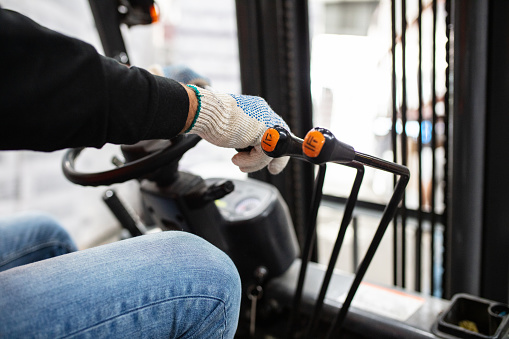How to choose a telescopic forklift

The telescopic forklift is an industrial handling vehicle. It refers to various wheeled handling vehicles that perform short-distance loading, unloading, stacking and transport of palletized goods. The International Organization for Standardization ISO / TC110 is defined as an industrial vehicle. Often used for transporting large items in the warehouse, typically using a fuel car or battery.
The telescopic forklift advantage:
- The frame is driven by four wheels and rigidly suspended.
- Hydraulic mechanical transmission, hydraulic power steering and hydraulic braking, rear wheel steering.
- The working device is a two-section quadrilateral telescopic working arm. The standard model is equipped with a fork or arm device.
- It can be used for pallets, packing forks or palletized material lifting operations in containers and short distance loading, unloading, palletizing and handling of various types of materials.
- It is suitable for working in a variety of work environments. It is an ideal equipment for loading, unloading, lifting and transportation in industrial, mining, industrial, building, construction, port, municipal engineering and other industries.
- This telehandler is also equipped with various accessories such as buckets, hooks and arms for users to choose and install.
- The loading and unloading height and off-road performance of this model are unmatched in regular forklifts.
Option guide editor
First, the use of attachments
Compared to the traditional use of forklift forks to carry cargo pallets for handling and stacking, special fastening applications can greatly improve forklift efficiency and reduce operating costs. Dedicated forklift attachment for load taking, rotation (cis / counterclockwise), side shift, push / pull, tilt (forward / reverse), split / close (adjust fork distance), telescopic, etc. This action cannot be performed with a forklift truck.
The importance of the application of special accessories for forklifts can be summarized as follows:
- High production efficiency and low operating costs.
Mechanical handling is shorter than traditional manual handling operations, while reducing labor costs and costs and improving work efficiency. In the same handling cycle, the number of forklift movements is significantly reduced, and the corresponding forklift tire / gearbox / fuel consumption is also reduced accordingly, and the operating cost is also reduced accordingly.
- The operation is safe and reliable, reducing the accident rate.
Hitches designed and manufactured by professional manufacturers of forklift equipment for various industrial conditions are designed with safety devices. Stuck (or forked) goods are not easy to slide under abnormal conditions, such as the gripper retainer. When the load is transported, the pipes burst, the hydraulic system maintains the pressure and the load does not slip.) The final load device has an end buffer device which reduces the accident rate.
- The loss of assets is small.
Thanks to the unique locking / lateral shift / rotation functions of the accessories, goods can be transported, stacked or loaded more safely, minimizing the loss of goods. The use of attachments also reduces the frequency of use of the pallet (for example, handling pallets) and the associated procurement and maintenance costs are reduced.



